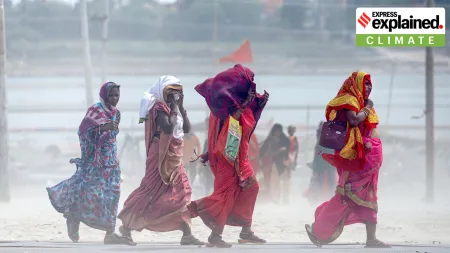- India
- International
Explained: What is the Danakil Depression?
Microbes are known to survive almost anywhere. Scientists now believe that this place is an exception.
 The Danakil Depression in northeastern Ethiopia is one of the world’s hottest places, as well as one of its lowest, at 100 metres below sea level.
The Danakil Depression in northeastern Ethiopia is one of the world’s hottest places, as well as one of its lowest, at 100 metres below sea level.
Extremophile microbes can adapt to environmental conditions that are too extreme for everything else. New research, however, has pointed to a place on Earth — bubbling pools of water and mounds of salt covering its landscape — that is too daunting even for these microorganisms.
The Danakil Depression in northeastern Ethiopia is one of the world’s hottest places, as well as one of its lowest, at 100 metres below sea level. At the northern end of the Great Rift Valley, and separated by live volcanoes from the Red Sea, the plain was formed by the evaporation of an inland water body. All the water entering Danakil evaporates, and no streams flow out from its extreme environment. It is covered with more than 10 lakh tonnes of salt.
In 2016, scientists ventured here to find out if anything could survive in such harsh conditions. At the time, expedition leader Felipe Gómez from Spain’s Centro de Astrobiologia said, “Any microorganisms living here will be extremophilic microbes of a major interest to astrobiologists.”
Now, a new study published in Nature Ecology & Evolution on October 28, says that active and naturally occurring life cannot be sustained at Danakil. It identifies two barriers: magnesium-dominated brines that cause cells to break down; and an environment having simultaneously very low pH and high salt, a combination that makes adaptation highly difficult.
Also read | Explained: Why India has said no to RCEP
More Explained
EXPRESS OPINION
May 03: Latest News
- 01
- 02
- 03
- 04
- 05







































